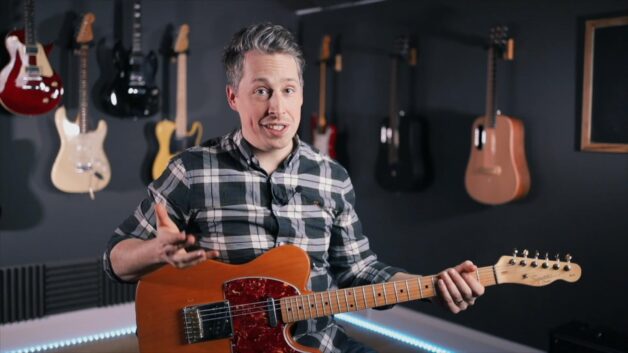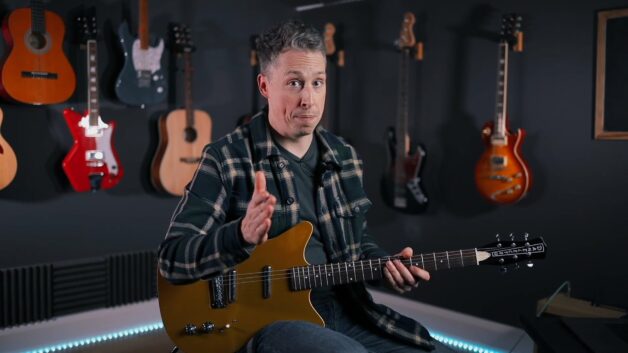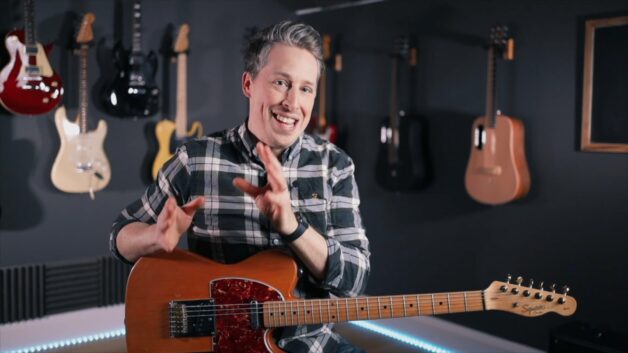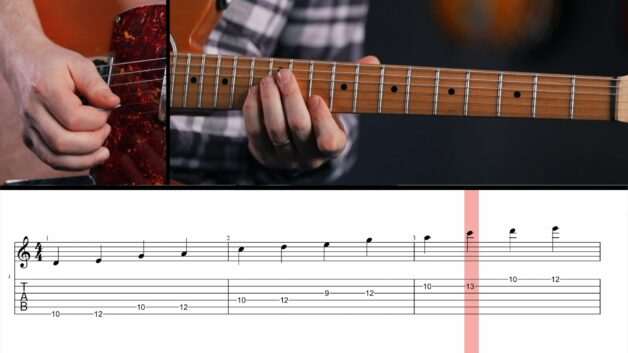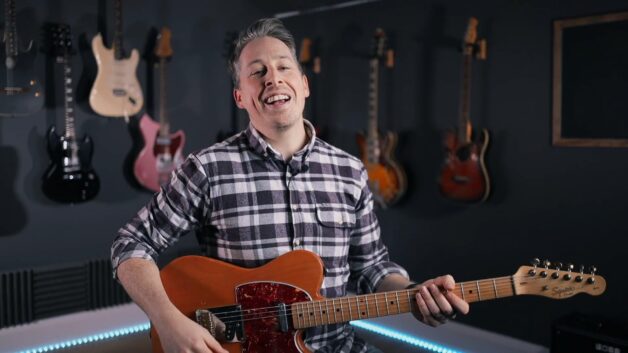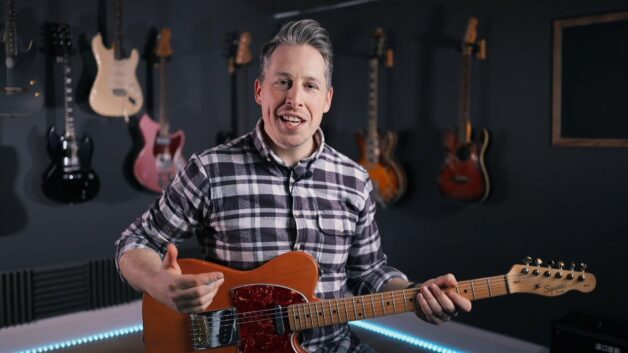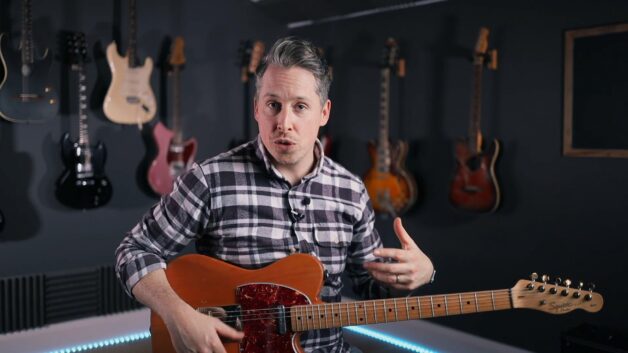Module 3 - Lesson 3
Introduction to Jazz Guitar Soloing
 Julien Bitoun
Julien Bitoun
- Beginner
- Jazz
-
MODULE 3
Introduction to Guitar Solos by Styles - Introduction to Blues Guitar Soloing
- Introduction to Rock Guitar Soloing
- Introduction to Jazz Guitar Soloing
The Art of Beginner Jazz Guitar Soloing: Learning From the Masters
Jazz soloing represents one of the most expressive forms of guitar playing, yet many beginners find it intimidating. The good news? Breaking into this world is more accessible than you might think.
The Rich History Behind Jazz Guitar Solos (Where It All Began)
The story of jazz guitar soloing begins in the bustling streets of New Orleans, where Dixieland bands created the foundation for what would become America’s original art form. As jazz evolved through the 1930s, the big band era introduced us to luminaries like Duke Ellington and Benny Goodman. It was in Goodman’s orchestra that Charlie Christian made history, becoming the first guitarist to step into the spotlight with electric guitar solos. His innovations coincided perfectly with Gibson’s 1936 introduction of the electric archtop guitar – a marriage of technology and talent that forever changed guitar playing.
While Christian was electrifying American audiences, Django Reinhardt was crafting his own revolution across the Atlantic with nothing but an acoustic guitar and two functioning fingers (having lost the use of two others in a fire). This contrast demonstrates the adaptability that remains central to jazz soloing today.
Many beginners make the mistake of diving straight into improvisation without first building a vocabulary. This is like trying to write poetry before learning words. The masters didn’t emerge fully-formed – they studied those who came before them.
Developing Your Sound and Technique: The Building Blocks
Creating an authentic jazz guitar sound begins with your equipment setup. For that classic warm tone reminiscent of Wes Montgomery, select your neck pickup and roll back the tone control slightly. You’ll immediately notice how this darkens your sound, even when picking with some brightness. Modern jazz players might prefer settings closer to rock territory, but understanding the traditional tone gives you a foundation to build upon.
One common struggle for beginners is transitioning between scales and arpeggios while maintaining rhythm. Start by working through standards like “Autumn Leaves” or “Blue Bossa”. These provide manageable chord progressions that won’t overwhelm you with complex changes.
The pentatonic scale serves as your entry point, offering five positions that connect across the fretboard. Rather than viewing these as isolated patterns, practice transitioning between positions using slides, hammer-ons, and pull-offs. These techniques aren’t just ornamental; they create the legato phrasing essential to jazz’s flowing quality.
Many novice players rush through phrases, forgetting that space and silence carry as much weight as notes themselves. Miles Davis, though primarily a trumpeter, taught guitarists the value of restraint – sometimes what you don’t play matters more than what you do.
From Imitation to Your Own Voice: The Journey Continues
Jazz education traditionally emphasized pure improvisation, but this approach often leaves beginners feeling lost. Instead, learn written solos note-by-note first. This method introduces you to the language of jazz in digestible chunks, much like learning phrases in a new spoken language before attempting conversation.
When practicing written solos, pay attention to how phrases relate to the underlying chord structure. Notice how jazz masters often target chord tones on strong beats while using passing tones to create motion. This understanding becomes crucial when you eventually craft your own lines.
The transition from playing others’ solos to creating your own happens gradually. You might start by making small variations to written phrases – changing a note here, adjusting rhythm there – before eventually combining familiar fragments into entirely new statements. This organic evolution mirrors how we develop spoken language, moving from repeating phrases to forming original thoughts.
Ready to begin your journey into jazz guitar soloing? Start with structured learning of classic solos, building your technical foundation while absorbing the rich vocabulary of this tradition. With time and practice, you’ll find your unique voice emerging naturally from the influences you’ve studied and internalized.

